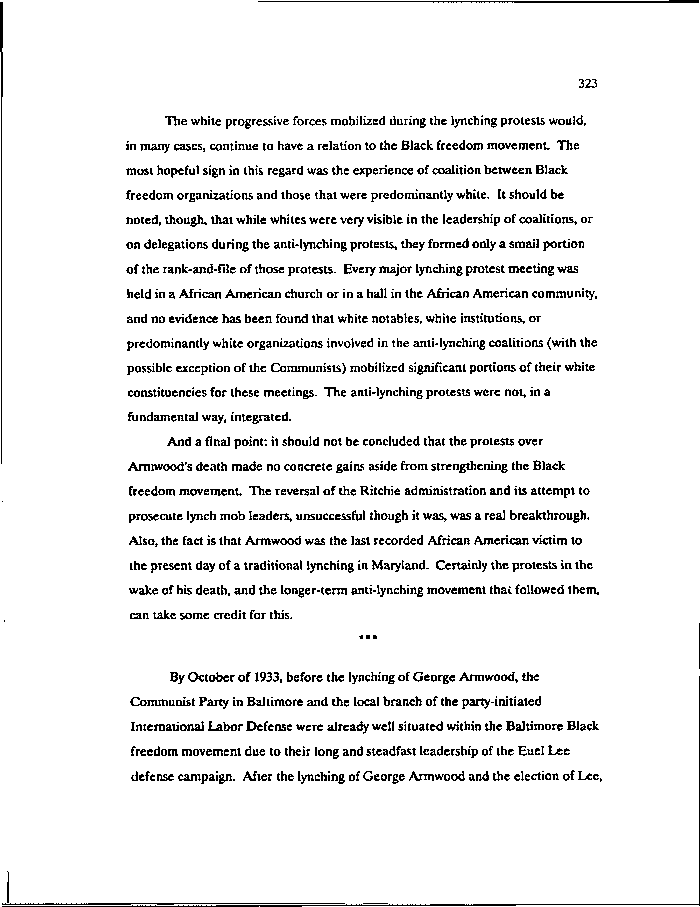|
323
The white progressive forces mobilized during the lynching protests would,
in many cases, continue to have a relation to the Black freedom movement The
most hopeful sign in this regard was the experience of coalition between Black
freedom organizations and those that were predominantly white. It should be
noted, though, that while whites were very visible in the leadership of coalitions, or
on delegations during the ami-lynching protests, they formed only a small portion
of the rank-and-filc of those protests. Every major lynching protest meeting was
held in a African American church or in a hall in the African American community,
and no evidence has been found that white notables, white institutions, or
predominantly white organizations involved in the ami-lynching coalitions (with the
possible exception of the Communists) mobilized significant portions of their white
constituencies for these meetings. The anti-lynching protests were not, in a
fundamental way, integrated.
And a final point: it should not be concluded that the protests over
Armwood's death made no concrete gains aside from strengthening the Black
freedom movement. The reversal of the Ritchie administration and its attempt to
prosecute lynch mob leaders, unsuccessful though it was, was a real breakthrough.
Also, the fact is that Armwood was the last recorded African American victim to
the present day of a traditional lynching in Maryland. Certainly the protests in the
wake of his death, and the longer-term anti-lynching movement that followed them,
can take some credit for this.
By October of 1933, before the lynching of George Armwood, the
Communist Party in Baltimore and the local branch of the party-initiated
Internationa] Labor Defense were already well situated within the Baltimore Black
freedom movement due to their long and steadfast leadership of the Euel Lee
defense campaign. After the lynching of George Armwood and the election of Lee,
|

